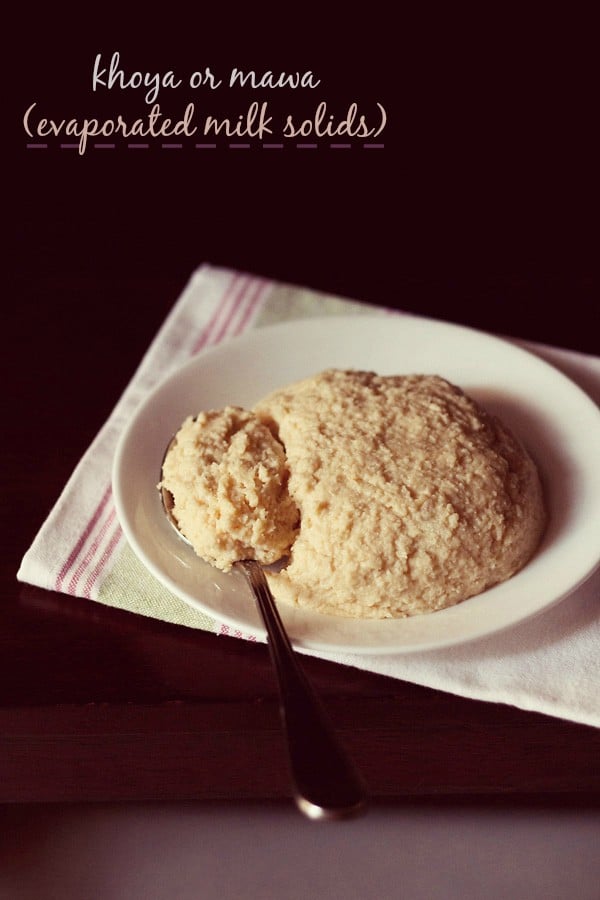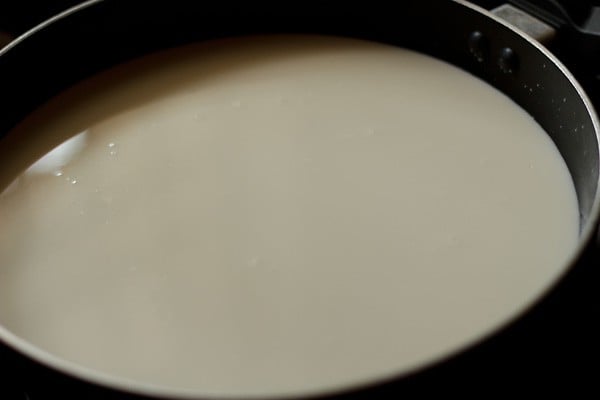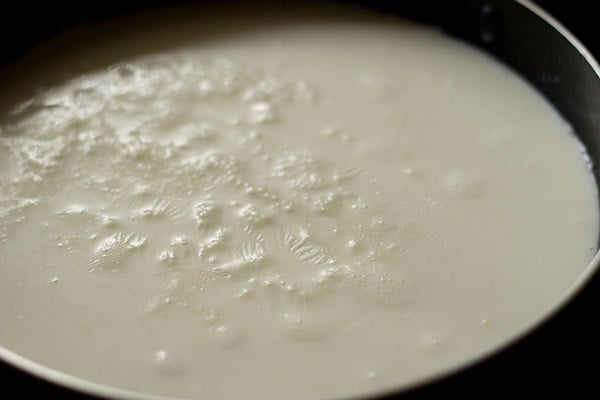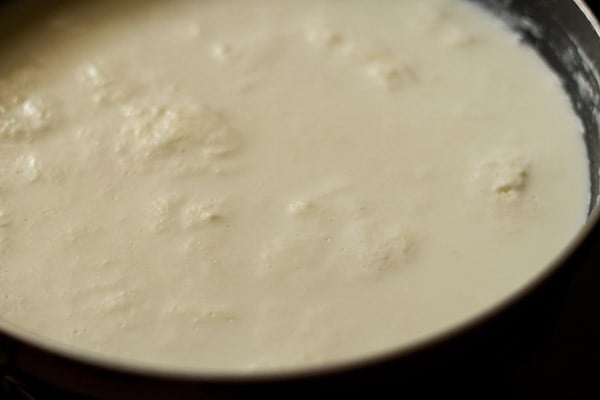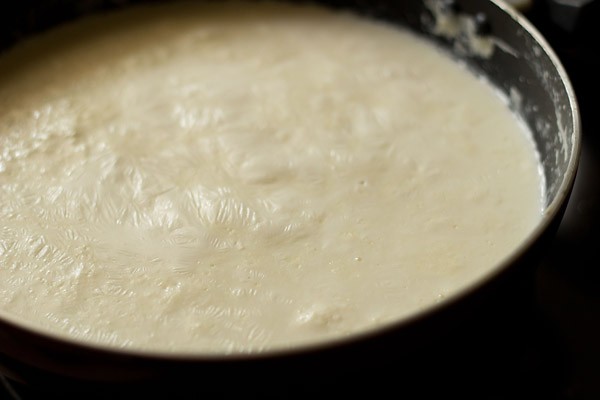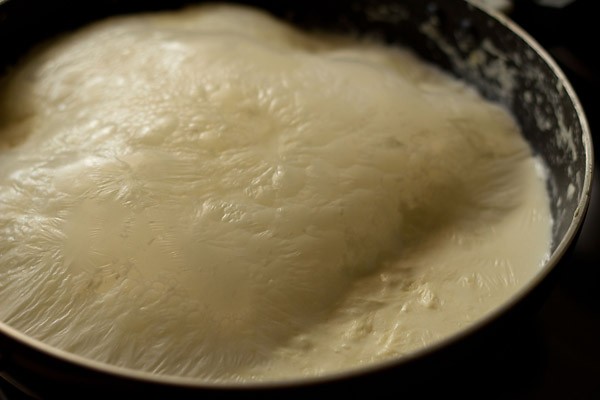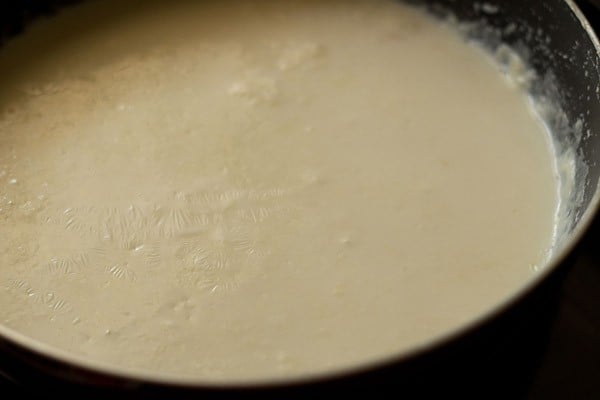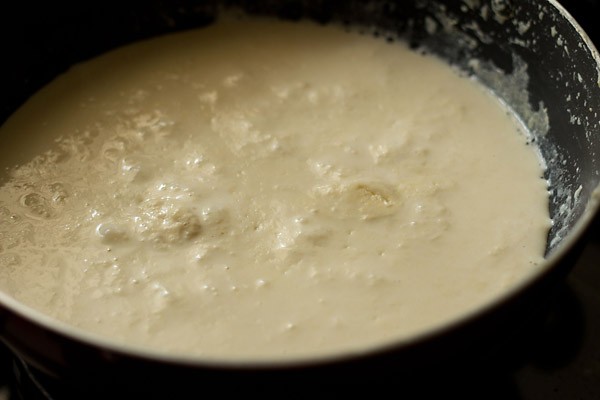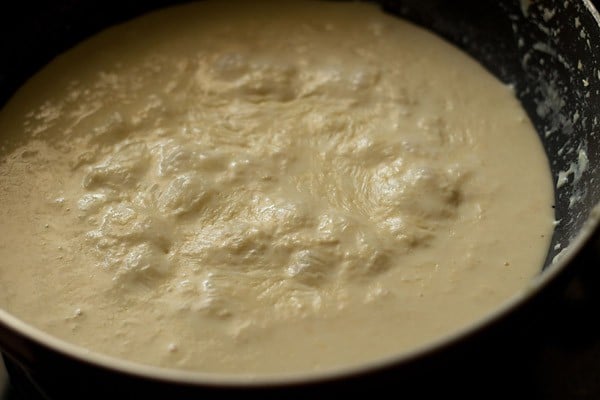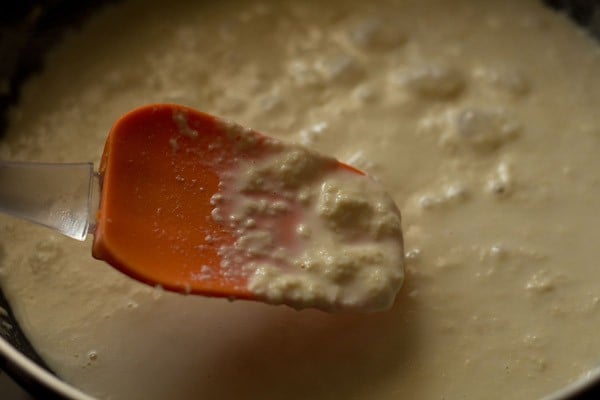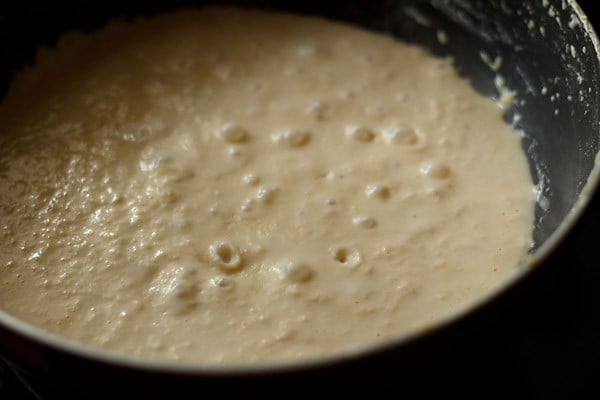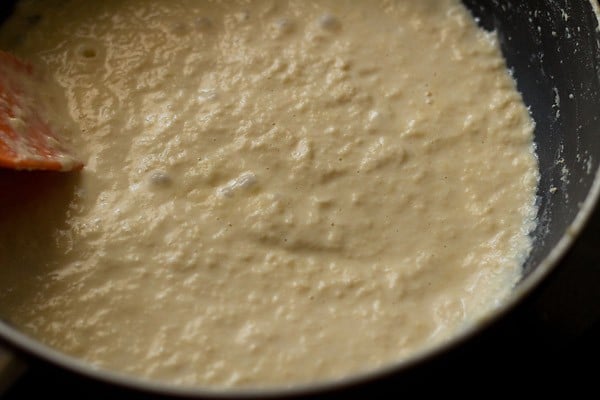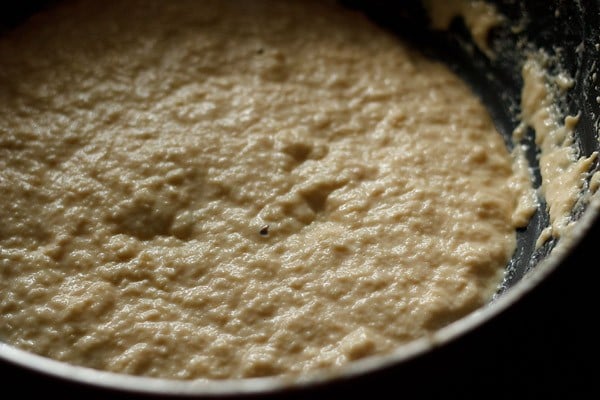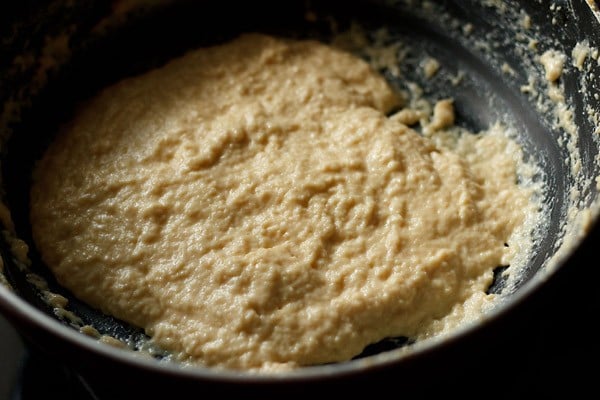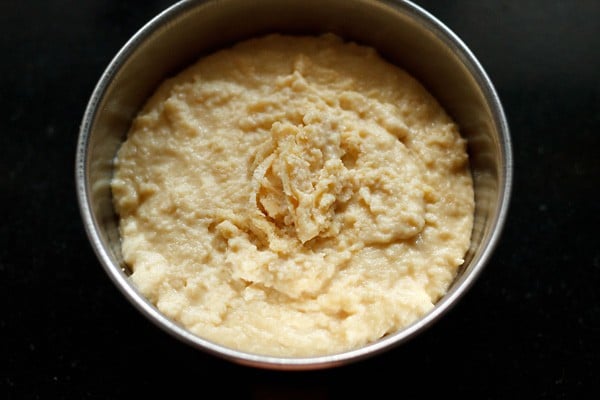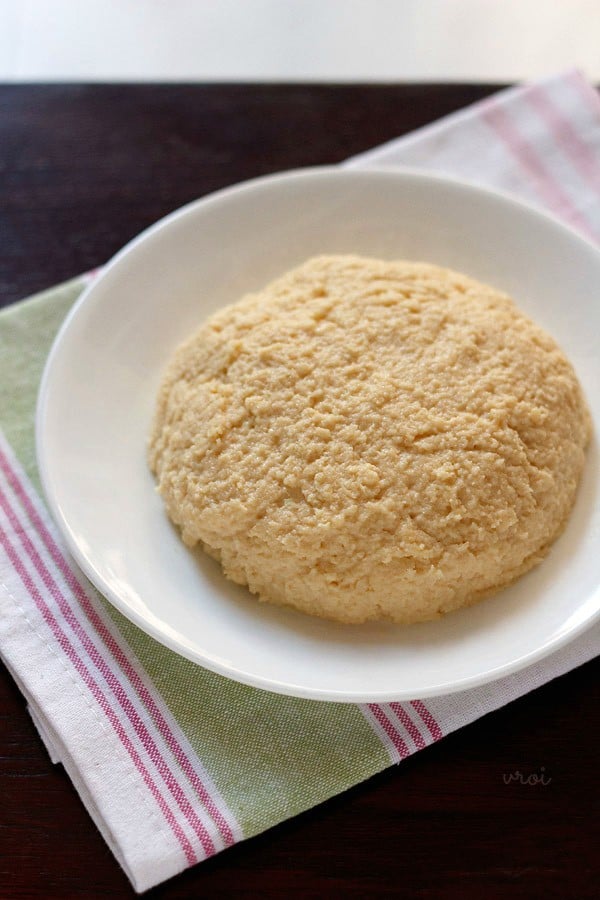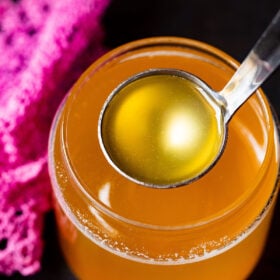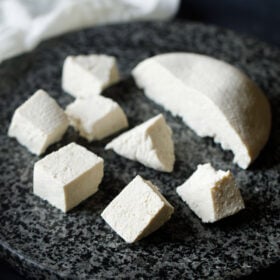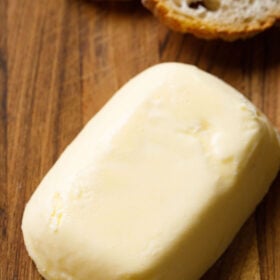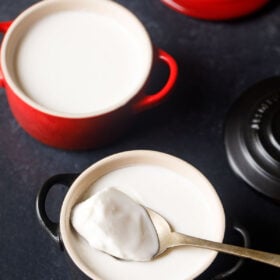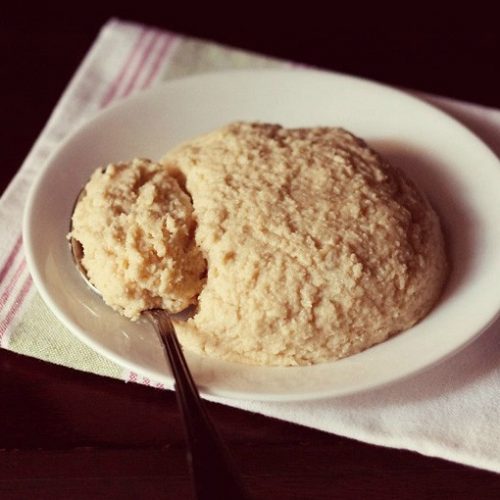What is Khoya?
Khoya, also known as mawa or khoa, is dried evaporated milk solids. Milk is slowly simmered in a large iron kadai (wok) till all its moisture evaporates and it reduces to solids. As I have mentioned above, Khoya is traditionally made by slow cooking, simmering and thickening milk in a large kadai. As a result most of the water gets evaporated from the milk and what remains is milk solids. This process of making mawa recipe takes time and needs patience as constant stirring is required. In Indian cooking, especially in the northern parts of India, khoya forms a base of almost all sweets. Khoya is also added to curry recipes and unique cake is also made from it, the Mawa Cake. There are several types of khoya (read on below), which can range from being hard to soft to granular. A few of the Indian sweets recipes where khoya is used are:
Variants
Depending on the duration of cooking milk and the moisture content, there are three types or variants of khoya that are made and are used specifically to make some sweets or curry dishes.
About Khoya Recipe
If I’m being honest, I usually buy khoya from the store. It saves time and prevents me from having to go through the long process of cooking. However, if you prepare the khoya as a side task while you are doing something else in the kitchen, then it is a simple task. The milk gets reduced over a low heat and all you have to do is stir and scrape it at intervals. It is not tedious. I do suggest preparing khoya simultaneously when you are cooking or doing some other chore in the kitchen. This is multi-tasking and you have to be attentive, but it’ll make the process feel like it’s going much more quickly. 🙂 This is not a recipe as such, but more of a method of how to make khoya. You can use any amount of milk to prepare khoya depending on your needs. Like all homemade stuff, homemade khoya is also 100 times better than the store-bought kind. There is only the richness & goodness of milk in this homemade khoya, with no additives or preservatives.
Tips To Remember
- Milk: The milk has to be fresh. Whole milk gives better results. 1.25 litres of milk yielded 250 gms of khoya. Depending on the quality and fat content, the khoya yield can vary. I suggest making khoya recipe with 1 litre to 2 litres of milk.
- Pan: The pan for making mawa recipe should be thick bottomed. This is so that the milk does not get burned or browned from the bottom. If the milk gets scorched, whatever effort you have put out goes waste. The pan has to be deep too, so that the milk does not overflow while simmering. I used my large non-stick kadai to make the khoya. Non-stick works very well when making products like khoya. You could also use a sauté pan or a wok. The size of these cooking pans will vary with the amount of milk you use.
- Stirring Often: It is important to stir the milk often as it simmers, cooks and thickens. So make sure to stir and scrape at intervals so the milk or the khoya doesn’t burn or stick to the pan.
- Storage: This khoya stays good for about 3 to 4 days in the refrigerator or 6 to 8 days in the freezer.
How to make Khoya or Mawa
- Pour milk in a large, thick-bottomed pan and place the pan on the stove top.
- Bring milk to a gentle boil on a low to medium heat.
- Then lower the heat and simmer the milk. Stir at intervals whilst the milk is simmering.
- This is the consistency of the milk after 23 minutes right from the beginning. You can see it is getting thicker and there is a skin on the top.
- The milk will froth many times, while its being simmered.
- So when you see this happening, stir the milk with a spatula.
- Scrape the milk solids from the sides and add them back to the milk. The consistency after 1 hour 40 minutes. The milk has reduced considerably.
- Stir and continue simmering.
- You can see below the consistency like that of Rabdi.
- This is what we get after 2 hours of simmering. Just few minutes more 🙂
- After 3 more minutes this how the consistency appears.
- Towards the last 7 to 8 minutes, you will see bubbles bursting in the reduced and condensed milk. At this stage, continuously stir the reduced milk. If you don’t then the bottom will get browned or burnt. The bubbles signify the presence of moisture in the reduced milk. Stir and simmer till you see no bubbles in the milk solids. You will also see some granular texture in the reduced and thickened milk. 13. When you see no bubbles bursting, it’s time to turn off the heat. It took me 2 hours and 8 minutes overall on a low heat. While the mawa was reducing, I was prepping and cooking veg fried rice along with mushroom manchurian.
- Once done, collect the khoya or mawa in a bowl. With a spatula, scrape the milk solids from the sides and add these to the bowl. Cover the bowl and let the khoya cool at room temperature. Then you can refrigerate it in an air-tight container.
- Add this homemade khoya or mawa to various Indian sweets or Indian curries. Remember to store in an airtight container in the refrigerator or freeze it. Please be sure to rate the recipe in the recipe card or leave a comment below if you have made it. For more vegetarian inspirations, Sign Up for my emails or follow me on Instagram, Youtube, Facebook, Pinterest or Twitter. How to Make Ghee | Homemade Ghee Recipe How to Make Paneer | Homemade Paneer Recipe How to Make Butter How To Make Curd | Dahi | Homemade Indian Yogurt This Khoya recipe from the archives first published in October 2014 has been updated and republished on August 2023.
